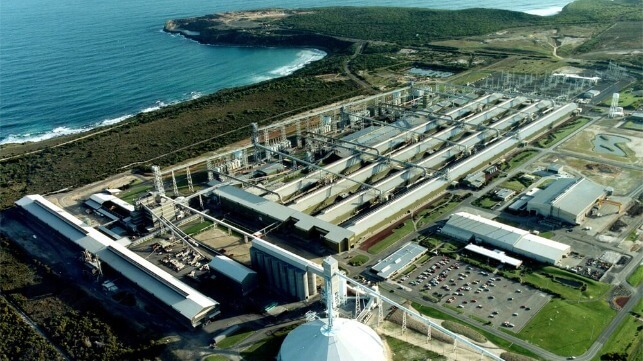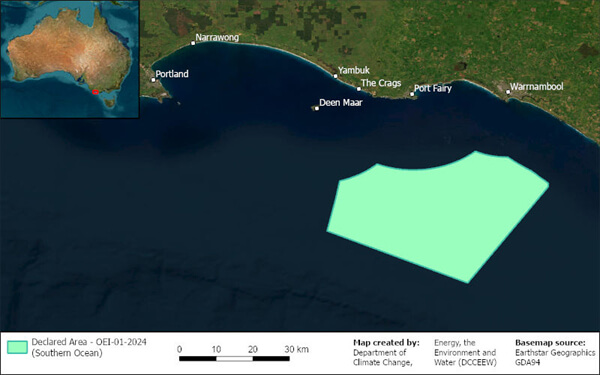Australia’s Fledging Offshore Wind Industry Hit by More Headwinds

Australia continues to move forward with its efforts to catch up and start its offshore wind industry but it continues to encounter a series of challenges. In the latest step, the area for the third offshore wind zone was cut back to just one-fifth of the original proposal as it encountered challenges from the communities and industry.
The area is in the Southern Ocean off western Australia focusing on the Victoria region. The Albanese government proposed the area in 2023 and began a 64-day public consultation process between June and August which received 3,285 submissions. According to the government, the focus on all the wind areas includes factors such as strong, consistent wind, proximity to areas of high electricity demand and existing grid connections, and a current reliance on aging coal-fired power stations.
The government today officially declared an area of 1,030 square kilometers which would be at least 15 to 20 kilometers from Victoria’s coast. The projection is that the area can provide over 2.9 GW of offshore wind energy, enough to power over two million homes.
In addition to being reduced by four-fifths from the original proposal it now specifically excludes an area off South Australia, as well as fishing and shipping areas as well as zones considered significant to the country’s First Nations. It now spans an area from Port Fairy to Warrnambool with the government highlighting that critically it can provide power to the Aluminum Smelter in Portland.

Map of the declared area (Dcceew)
It is not the first setback for the industry. Two months ago, the federal government rejected plans for the country’s first wind port. The state-owned Port of Hastings developed plans to convert an unused area into staging and assembly, but it was blocked by the federal government which said the environmental impact would be too significant.
Victoria has a goal of developing 2 GW from offshore wind by 2032 and 9 GW by 2040. The government highlights that the region is well suited to offshore wind energy production due to its wind resources, existing shipping infrastructure, and the aluminum smelter which uses up to 10 percent of the state’s electricity.
Today’s declaration of the area for development also began a period for developers to file feasibility license applications, which will run until the beginning of July. During the feasibility license stage, developers must undertake detailed environmental assessments and engage in further consultation, including how the project will coexist with the shipping, tourism, and fishing industries. Construction can only begin after the feasibility stage is completed and developers have gained subsequent environmental and management plan approvals.
The Southern Ocean region is one of six priority areas identified by the government for offshore wind development in Australian Commonwealth waters. Gippsland in Victoria was declared in December 2022 and the Hunter region in New South Wales was declared in July 2023. Illawarra also in New South Wales was opened for comments at the end of 2023, followed by Bass Strait in Northern Tasmania. The final area, the Indian Ocean off the Bunbury region in Western Australia was opened for consultation last month.
Australia’s Climate Council concluded in an assessment at the end of 2023, “Unfortunately, we are lagging behind the rest of the world when it comes to offshore wind.” While there are several well-defined projects, Victoria has said it does not expect to have the first leases in place till 2026 and to achieve the first 2 GW of offshore wind energy by 2032.
No comments:
Post a Comment